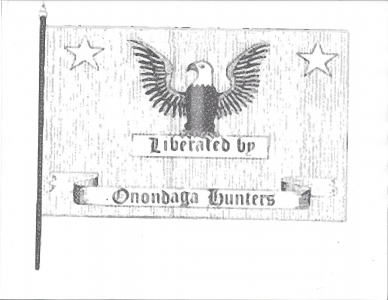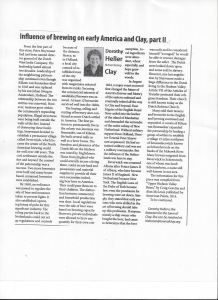Remembering the Clay Log Cabin DigsPosted on March 8, 2018 |
REMEMBERING CLAY
Remembering the Clay Log Cabin Digs*
It doesn’t seem possible it has been 20 years since we were digging up artifacts from the original site on Henry Clay Boulevard. “We” included members of the Clay Historical Association (CHA), teachers and students from ES-M, CNS and Liverpool School Districts, members of churches and Boy Scouts. There were 31 volunteers at the first dig from July 13 – July 26, 1997. Three more digs followed. First, a little history of this well-known cabin. The first owner of lot #50 consisting of 500 acres on the Military Land Tract was Peter Van Dyck, Private in the 1st New York Regiment, 8th Company in the Township of Cicero; his payment for military service in the Revolutionary War. (Clay was still a part of Cicero until 1827.) On July 8, 1790, he sold it to Thomas Shaw. Many veterans preferred to sell their grants rather than settle on them. It seems probable that one or both of them built the cabin as it has two styles of construction, English and Scandinavian. There was one partition downstairs dividing the kitchen area and the adult bedroom. A spiral staircase led upstairs for all the children to sleep. A center fireplace provided even heating for the 30 X 20 foot cabin. Early photos show a chimney in the center of the roof. Over the years, it was used as a private dwelling, office, storage building and a sportsman’s club lodge. It was owned by Andrew Johnson, Abraham and Elizabeth Morgan, Ralph Bulkley, Sam Meldling, and the American Peat Company. The company used it as a fuel source from the marsh north of Mud Creek, passing it on to Lucius Gleason who sold it to Albert Jack Hamlin in 1904. It was used to store willow branches for the basket industry and a dwelling for hired hands when tobacco and other crops were grown around the cabin. In the 1940’s when the sportsman used it as a lodge and rifle range, many improvements were made. The cabin was abandoned in the last 1970’s and stood idle in all seasons and gradually deteriorated. Many local citizens recognized the value of preserving possibly the oldest remaining structure in the Town of Clay. During the country’s Bicentennial year of 1976 and the Town of Clay’s Sesquicentennial year in 1977, the town’s 150th birthday, members of the CHA thought about preserving it. During these celebrations, the cabin was open to the public and the Clay Town Players portrayed early settlers who once lived there. After that, the cabin slipped from the eyes of the public as the property became overgrown and hidden from sight. Dick Case, writer for the Herald Journal, published several articles on the sad condition of this historic landmark and encouraged the Town to preserve it before it was too late. In 1994, Dorothy Heller of the CHA brought before the Town Board an expert on log cabin preservation. He worked at Fort Ontario and presented his opinion and expertise on why this cabin should be saved before it was too late. In the winter of 1995-1996, a tree fell on the roof exposing the interior to the elements. Deterioration accelerated. In the summer of 1996, Assistant Town Supervisor, David Palmer, became involved and said. “Let’s save the cabin!” Crawford and Stearns, an architectural preservation firm, was contacted for their recommendations. The Town removed the tree. The original agreement with the landowner, Robert Hamlin, was to move the cabin to the Historic Park on Route 31. Because of the advanced decay it was not possible to move the entire cabin, but only one corner once it was stabilized. That’s when plans began to formulate for archaeological digs before and after it was removed! (To be continued – The digs!) *From personal involvement and “Digging Into Clay’s Past”, a Report by Donald Thompson, President of Clay Historical Association in 1977.
Dorothy Heller, Historian
Other
Remember Clay Stories
Brewing
Remembering Clay | Jun 29, 2015
REMEMBERING CLAY
Influence of Brewing on early America and Clay
Susan Avery Bick Remembers Life on Buckley Road
Remembering Clay | May 1, 2012
Just a couple weeks ago, I had the great fortune to come into possession of an original manuscript written by Susan Avery Bick, which she completed just a few months before she passed away entitled “When It Was Country”* This and many…

Hiram Sharp - Part II
Remembering Clay | Aug 26, 2014
Hiram Sharp – Part II - Battle of the Windmill*

